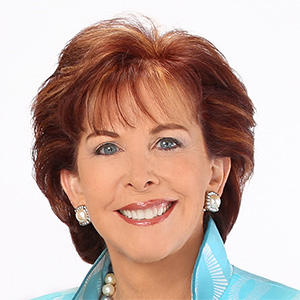America's most famous inflation gauge is easing -- but some of your biggest expenses are left out
Published in Business News
Price pressures have eased substantially over the past two years, but a disconnect remains between what US inflation data show and what millions of Americans experience with their finances.
That’s in part because price levels are still higher than they were before the pandemic. Another explanation: the government’s key inflation measure excludes a number of major everyday costs that have surged in recent years.
Property taxes, tips and interest charges from credit cards to auto loans aren’t factored into the Bureau of Labor Statistics’ consumer price index. The CPI also leaves out a key aspect of home insurance, as well as brokerage fees and under-the-table payments to babysitters and dog walkers — costs that can add up.
“The CPI is capturing the goods and services that you purchased for consumption, but there are things that affect your cost of living that are outside of that,” said Steve Reed, a BLS economist who works on the index. “And so it can’t realistically be priced.”
The CPI rose 2.4% in the year through September, the smallest advance since early 2021. Inflation has subsided since the Federal Reserve started hiking interest rates in 2022, which sent rates for mortgages, credit cards, auto loans and student debt soaring. While interest payments make up a big chunk of many Americans’ expenses, the CPI measures the price changes in the items bought, not the debt incurred to finance those purchases.
For example, roughly $628 billion in credit card debt is rolled over or unpaid every month when the typical interest rate charged is around 22%. That means that while the underlying purchased item or service was included in the official measure, millions of dollars in credit card interest payments aren’t being counted.
“It’s one thing that’s definitely impacting the way people spend money,” said Pete Earle, economist at the American Institute for Economic Research and creator of the everyday price index that aims to track daily purchases that can’t be easily avoided. “It’s not really inflation, but it’s definitely something that should be taken into account.”
It gets a bit tricky with housing, which the BLS views as an investment decision rather than an everyday expense. That means that home prices, as well as associated costs like mortgage payments and property taxes — which add up to thousands of dollars a year and fluctuate with prices — are left out.
The same principle applies for how the CPI measures home insurance — it takes into account coverage for personal property but not the dwelling, or the actual structure itself. The latter, which reflects the home’s price, is the more significant component that affects a homeowner’s annual premium.
The overall gauge, which is known as the CPI for all urban consumers, draws from a sample that covers over 90% of the US population and comprises areas with at least 10,000 people. Since the measure is based on the average consumer, someone whose medical care comprises a larger-than-typical share of their expenses may experience a different rate of inflation than the norm, or a household that uses solar energy rather than fuel.
“The CPI does not necessarily measure your own experience with price change,” the BLS says on its website. “A national average reflects millions of individual price experiences; it seldom mirrors a particular consumer’s experience.”
The pricing challenges aren’t unique to the CPI. For example, the personal consumption expenditures price index, produced by the Bureau of Economic Analysis, also has some quirks when it comes to measuring certain expenses like health care. While the Fed prefers the PCE gauge, White House economists say that the CPI tends to more closely track consumers’ actual out-of-pocket spending.
Behavior shifts
In today’s economy, Americans deal with a myriad of firms trying to extract a payment. Some of these charges are brought about by shifts in consumer behavior and take time to be incorporated into the CPI — such as fees for grocery bags, airline baggage and meal delivery providers, as well as service charges some restaurants tack onto bills.
Other items are outside the scope of the CPI market basket, and consequently can make the consumer feel that their real cost-of-living isn’t accurately being measured.
Here are a few other expenses that don’t make it into the CPI:
—Optional tips: Tips are excluded except in the rare cases when the restaurant makes them mandatory such as for large parties, which are built into the bill. But any sort of optional tipping isn’t captured — even as tipping has become more widespread, and essentially coerced — with highlighted suggested amounts that have escalated and been built into payment processing software at retailers.
—Gambling activity: The cost of a Mega Millions ticket doubled in 2017 to $2, and in April 2025 it will jump to $5. Mega Millions tickets are sold in 45 states and Washington, DC. But lottery tickets, as well as sports betting, aren’t included in the CPI.
—Marijuana use: While cannabis is legal in many states for medical and/or recreational purposes, the government doesn’t have robust documentation at the national level to track prices.
—Illegal activity: Technological advancements have made parking or speeding violations much easier to capture with photo enforcement. These tickets can be costly for consumers yet don’t make it into the CPI.
©2024 Bloomberg L.P. Visit bloomberg.com. Distributed by Tribune Content Agency, LLC.











Comments